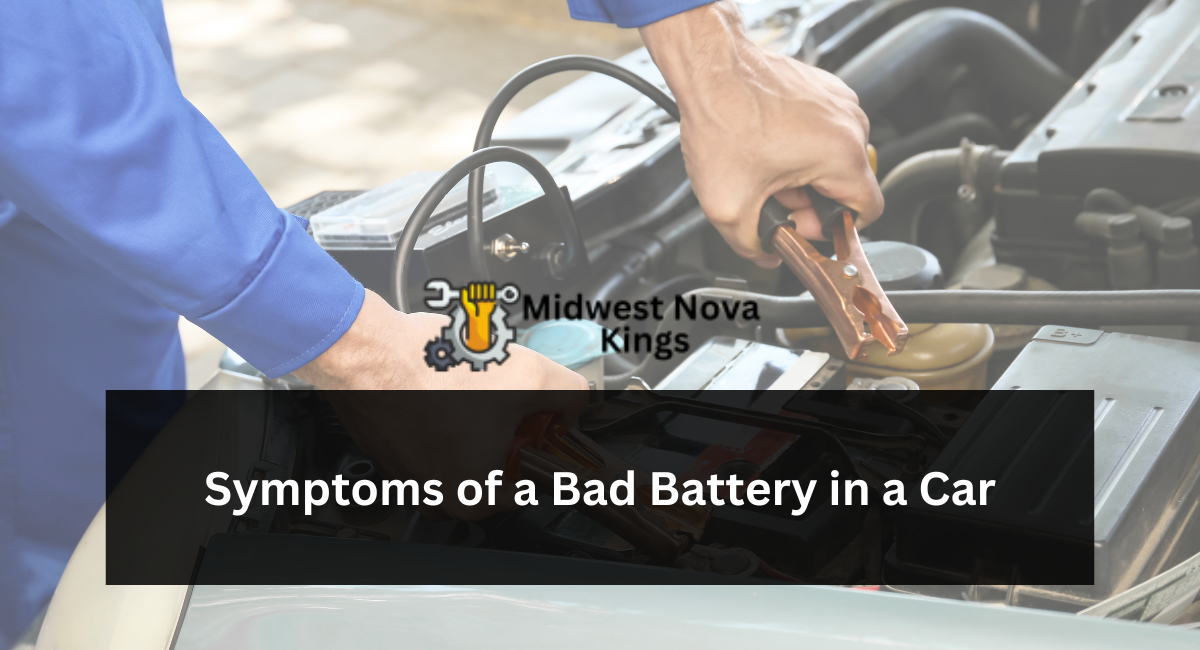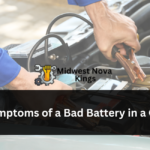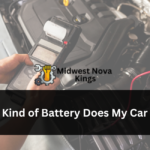Your car’s battery serves as its source of power, providing energy for accessories such as the headlights, dash lights and phone charger. If any of these devices appear to be acting strangely or slowly it could indicate a bad battery.
Open up the hood and take a good, hard look at your battery terminals and case. If they appear bulged outward, this could indicate acid leakage from inside.
1. Sluggish Start
One of the telltale signs that your battery has gone bad is when your car won’t start easily, usually because its power supply cannot meet engine cranking demands; but it could also be something drawing power away from accessories even when off (such as GPS devices, dashcams or alarm systems).
When your car begins starting slowly, you may hear an audible sputtering sound which becomes louder over time. This indicates that its battery cannot provide enough electricity to the computer and other systems onboard the vehicle.
Signs that a battery needs replacement are when its headlights or other lights flicker when starting up the engine, suggesting it doesn’t produce enough energy to power these features and needs replacing soon.
2. Dim Headlights
Your car battery serves as the heartbeat of your vehicle, providing power to every electrical component and accessory from headlights and air conditioning units to windshield wipers. As it begins to wear down, its effects may become apparent as accessories begin acting differently or stop working altogether. When this occurs, you might notice odd behavior from certain accessories – headlights could turn on or off unexpectedly for example.
Headlights may become dim as your battery drains, making driving at night challenging. While dimming headlights might not be as easily identifiable as dead engine symptoms, dim headlights still serve as a telling indicator that your battery needs replacing immediately.
Checking connections under the hood for corrosion or damage is also recommended, as is clearing away corrosion with proper tools before resecuring terminals. In more serious instances, alternator testing or replacement might also be required, in addition to repairs on wire components that have rust or have broken.
3. Flickering Lights
Your battery powers most of the electrical components in your car – such as windshield wipers, radio, and headlights. If any of these services stop functioning as they should, it could be an indicator that your battery has gone bad and needs replacement.
Flickering lights can be used as an early indication that your battery has failed, with dashboard and headlight lighting flickering when its charge can no longer hold onto a charge. This can be dangerously distracting while driving at night.
If the car won’t start at all, this is an indicator that its battery has failed. Even though a dying battery might provide enough juice to start the engine, once started it won’t have enough juice left over to sustain itself and all its components.
Flickering lights could also be a telltale sign of alternator trouble, often the source of flickering in vehicles. Visit AutoZone for a complimentary battery test and we can assist in diagnosing which component needs replacement and helping find one at your local AutoZone store.
4. Slow Engine Cranking
Your battery’s strength may begin to diminish over time and soon require replacement. A weak battery won’t have enough juice to crank your engine correctly and that may affect any electrical accessories like heated seats or dashboard lights that you have connected.
If your headlights appear dim or flicker, this could be a telltale sign of battery failure and should be addressed quickly for safety purposes on the road.
An important thing to keep in mind when troubleshooting a slow start issue is that it could be caused by anything other than just your battery itself. Poor electrical connections, defective starters or parasitic drains that drain while your car is parked could all contribute to slow starts; replacing just your battery might not solve anything or could make symptoms resurface later on.
5. Failing Accessories
If the radio, lights, or electronics in your vehicle seem dim or flicker after starting up the ignition, this could indicate that your battery has lost some charge. Your car relies on its battery for starting power while then the alternator recharges it as you drive – over time repeated short drives may discharge its reserves faster than they can be recharged by alternators.
Over time repeated short drives may drain its reserves faster than they can be recharged – when popped hood and seeing powdery white or blue substances at battery connection points is indicative of corrosion reducing performance and lifespan and will decrease performance and lifespan as a result.
An improperly functioning battery may produce sparks that cause your engine to backfire, as well as other symptoms. A battery that displays such symptoms will likely fail within months and should be replaced accordingly. If the red battery symbol appears on your dashboard or Check Engine Light illuminates, visit AutoZone immediately so an associate can test and replace your battery without charge – we even offer installation if required!
Conclusion
In conclusion, recognizing the symptoms of a failing car battery is crucial for preventing unexpected breakdowns. Issues like slow engine cranking, dimming headlights, electrical malfunctions, or a “Check Engine” light could indicate battery problems. Being attentive to these signs and addressing them promptly helps avoid inconvenience and potential safety hazards on the road.
Regular battery checks and maintenance contribute to a reliable vehicle, ensuring that your car starts smoothly and operates efficiently. If you notice any of these symptoms, seeking professional inspection and potential replacement of the battery can prevent further complications, ensuring your vehicle stays dependable for your journeys.










